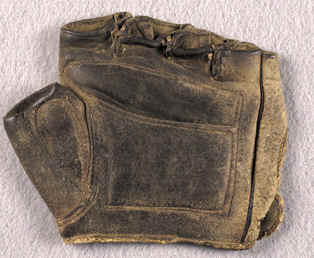La crosse has been called the "First Game of America" and "North America's Game" almost as long as there has been an United States of America. Seeking to be distinguished from the British and other European nations in the early formative years of the USA's existence, the sport first played by native tribes as "The Creator's Game" was readily adopted by the rest of the USA. Assimilated tribesmen were often thought of as "naturally adept" at the game, though other ethnic groups within the US would have waves of greatness in the game, such as the Jewish community in the early twentieth century. The game was simplified and the rules codified in the first half of the 19th century, with the number of players reduced to twelve, commonly thought to represent the twelve founding colonies of America, with the goal post being marked in red, white, and blue to represent the three colors of the US flag. The ball striking in the lowest blue zone scores one point, the middle white zone two points, and the highest red zone scores three points.
While the game clearly has deep American roots, it has been adopted by all of North America. Modern la crosse first made inroads into the Dominion of Southern America in the Province of Indiana, where the civilized tribes quickly adopted the simplified game for recreation. From there it spread throughout the Dominion, especially along the border where USA/DSA competitions became popular as a way of engaging in friendly competition with the neighbors.
While slower to penetrate into Mexico, it made inroads throughout the 19th century, and the Korsgaardist Mexican regime created their own version of la crosse to 'better reflect the historical heritage of Mexico' and this version became mandatory for all children to play in school as part of the Korsgaardist agenda. After the Global War, this variant of la crosse fell out favor, as most things tainted by Korsgaardism, but by then most Mexicans had gained a taste for la crosse in general, and readily adopted the standard version with gusto, and by 1900 the North American La Crosse Association (NALCA) was formed to promote continental competition and the North America Trophy (in the shape of a golden totem) became a hotly contested item between the three countries.
While most popular in North America, by 1930 it had enough international stature to be included as one of the original team sports in the Olympics. Fittingly, it was the US team that won the first Olympic competition.




